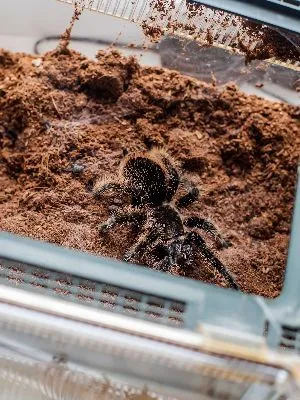Understanding the Curly Hair Tarantula
The Curly Hair Tarantula ( Tliltocatl albopilosus ), a captivating arachnid, has become a popular choice for both novice and experienced tarantula enthusiasts. Native to the tropical rainforests of Central America, particularly Costa Rica, this species is renowned for its docile temperament, striking appearance, and relatively easy care requirements. Its name is derived from the unique, curly hairs that cover its body, giving it a fuzzy, endearing look. Understanding the Curly Hair Tarantula involves recognizing its natural habitat, appreciating its gentle nature, and learning about its basic needs to provide optimal care. These creatures are not just pets; they are fascinating animals that offer a unique perspective into the world of invertebrates. Proper care ensures a long, healthy life for your tarantula, allowing you to enjoy its presence and observe its fascinating behaviors for years to come.
Origin and Habitat
Curly Hair Tarantulas originate from the tropical regions of Central America, primarily Costa Rica. In their natural habitat, they are terrestrial creatures that dwell in burrows or sheltered areas, often under fallen leaves, logs, or within the roots of plants. The warm, humid environment of the rainforest provides an ideal setting for these tarantulas, allowing them to thrive. Understanding their origin helps in replicating these conditions in captivity to ensure their well-being. Their natural environment consists of loose, well-draining soil with ample humidity and a temperature range that suits their needs. Recreating these elements in their enclosure is crucial for their health, molting, and overall happiness. Mimicking their natural habitat also provides enrichment, allowing them to exhibit natural behaviors, thus promoting a more fulfilling life.
Appearance and Characteristics
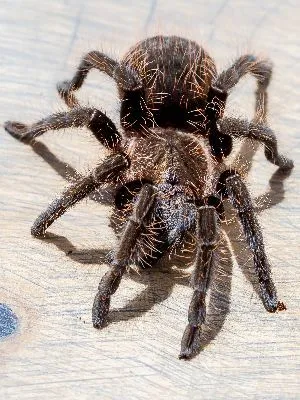
The Curly Hair Tarantula is easily recognizable due to its unique appearance. The most distinctive feature is the presence of curly hairs (setae) that cover their bodies, which range in color from brown to golden. They possess a robust build and relatively long legs, with females typically growing larger than males. Mature females can reach a leg span of up to 6 inches, while males are slightly smaller. They have a dark carapace and abdomen, with the curly hairs adding a striking contrast. Their fangs, although present, are not overly large, and their venom, while present, is not considered medically significant to humans. The overall impression is one of a hardy, beautiful spider, making them a favorite among tarantula keepers. These spiders also exhibit interesting behaviors, such as digging burrows and flicking urticating hairs as a defense mechanism.
Essential Care Facts
Caring for a Curly Hair Tarantula involves understanding and providing the right environment, nutrition, and handling practices. Key aspects include maintaining the appropriate temperature and humidity, providing a suitable substrate for burrowing, and offering a balanced diet. Regular monitoring of their enclosure, including checking for adequate moisture and removing any uneaten food, is essential. Safe handling practices, when necessary, are also crucial to prevent stress or injury to both the tarantula and the handler. By adhering to these essential care facts, you can ensure a healthy and fulfilling life for your Curly Hair Tarantula. Careful observation of your tarantula’s behavior, appetite, and overall condition allows you to identify any potential problems early on and make the necessary adjustments to their care.
Proper Enclosure Setup
The enclosure is your tarantula’s home, and a proper setup is crucial for its well-being. The size of the enclosure should be appropriate for the tarantula’s size, with more floor space than height. A juvenile tarantula can start in a smaller enclosure, which can be upgraded as it grows. A glass or plastic terrarium with a secure lid is ideal. Ventilation is essential to prevent mold and maintain air quality, so ensure that the enclosure has adequate ventilation. The enclosure should also include a substrate, such as coconut fiber or a mix of peat moss and vermiculite, to allow the tarantula to burrow and retain humidity. Decorations like cork bark, artificial plants, and hides can provide enrichment and security. The setup should also include a shallow water dish with fresh water to ensure hydration.
Substrate and Decor
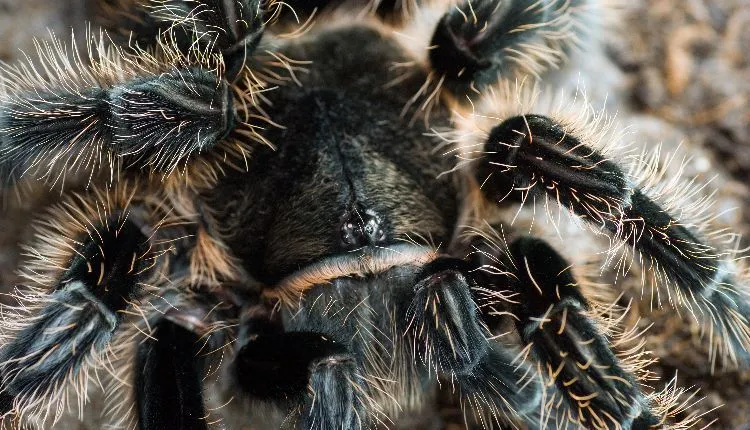
The substrate is the foundation of your tarantula’s enclosure and plays a crucial role in humidity regulation and providing a natural environment for burrowing. Coconut fiber is a popular choice because it holds moisture well and is safe for tarantulas. Peat moss and vermiculite can also be used, often mixed with coconut fiber to enhance moisture retention. The substrate should be deep enough to allow the tarantula to burrow comfortably, generally 4-6 inches. Decor can include cork bark, which provides hiding places and climbing opportunities, and artificial plants, which add visual appeal and provide additional security. Avoid using sharp or rough materials that could injure the tarantula. Clean the enclosure regularly and replace the substrate periodically to maintain a healthy environment. The addition of a small hide, such as a half-log or a commercially available hide, gives the tarantula a secure retreat.
Temperature and Humidity
Maintaining the correct temperature and humidity levels is crucial for the health of your Curly Hair Tarantula. The ideal temperature range is between 75-85°F (24-29°C). This can be achieved using a heat mat or a low-wattage heat lamp, but be careful not to overheat the enclosure. The humidity level should be kept between 60-70%. Regular misting with a spray bottle, especially during the molting cycle, can help maintain the appropriate humidity. You can monitor the humidity with a hygrometer, and adjust the ventilation and misting frequency accordingly. A properly maintained temperature and humidity level will ensure that the tarantula molts successfully, eats well, and remains active. Extreme fluctuations in temperature and humidity can stress your tarantula, potentially leading to health issues.
Feeding and Diet
Feeding your Curly Hair Tarantula a balanced diet of insects is essential for its health. Crickets, mealworms, and roaches are all suitable food sources. The size of the prey should be appropriate for the tarantula’s size; juveniles should be fed smaller insects, while adults can handle larger prey. Feed your tarantula 2-3 times a week, adjusting the frequency based on its appetite. Remove any uneaten food within 24 hours to prevent mold and mites. It’s important to gut-load the insects before feeding them to your tarantula. Gut-loading involves feeding the insects nutritious foods like vegetables and insect supplements, which enhances their nutritional value. Always provide a source of fresh, clean water in a shallow dish. Overfeeding can lead to obesity and health issues, so monitor your tarantula’s abdomen and adjust the feeding schedule accordingly.
Watering and Hydration
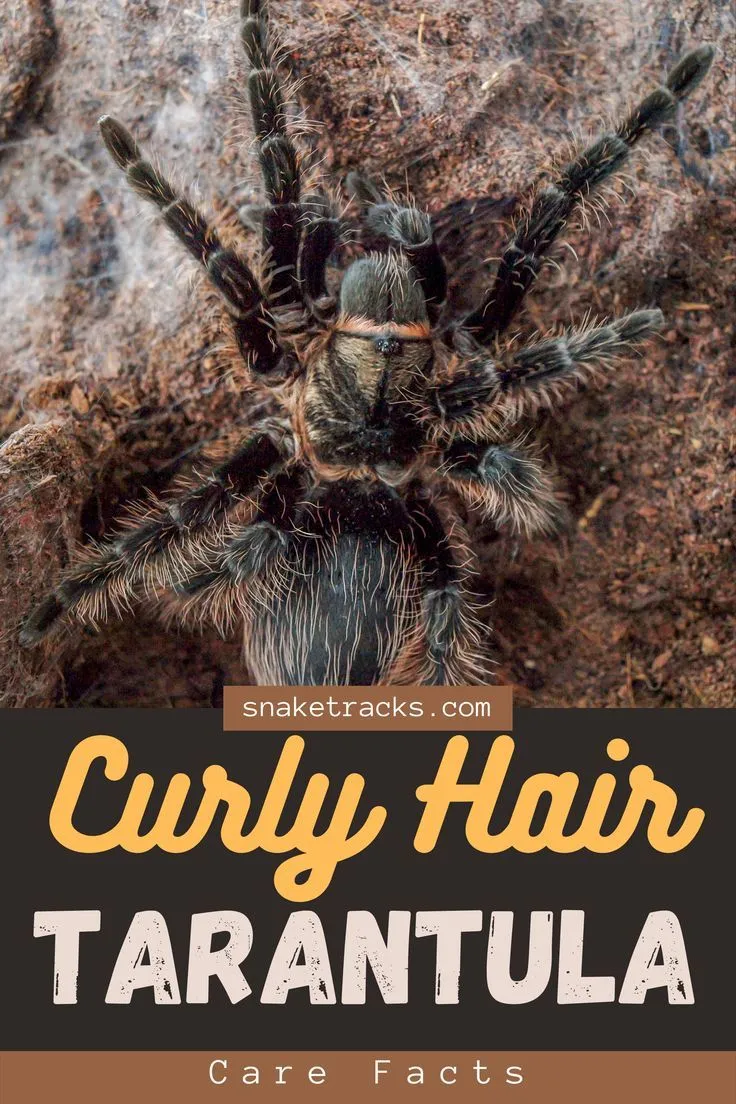
Providing fresh water is a critical aspect of Curly Hair Tarantula care. While they obtain some moisture from their food, a shallow water dish should always be available. The water dish should be shallow enough to prevent the tarantula from drowning. Use a non-toxic, shallow dish, and refill it regularly with clean water. For smaller tarantulas, you can use a bottle cap or a cotton ball soaked in water. You may also mist the enclosure lightly to provide additional moisture, especially before a molt. Ensure that the enclosure is not overly wet, as this can lead to mold and bacterial growth. The water dish should be cleaned regularly to prevent the buildup of bacteria and ensure the water remains fresh. If the tarantula is nearing a molt, they may drink more water.
Handling and Safety
While Curly Hair Tarantulas are known for their docile nature, handling should be minimized. Tarantulas can be easily stressed, and excessive handling can lead to injury or a defensive response, such as the release of urticating hairs. If you must handle your tarantula, do so gently and slowly, preferably over a soft surface to minimize the risk of injury if it falls. Always wash your hands thoroughly before and after handling. Avoid handling your tarantula after it has eaten or during its molting cycle, as it will be more vulnerable. Be aware of the tarantula’s posture and behavior; if it appears stressed or defensive, leave it alone. Children should always be supervised when near the tarantula’s enclosure. Handle with care and respect for the tarantula’s well-being.
Potential Health Issues and Prevention
Like any pet, Curly Hair Tarantulas can experience health issues. Common problems include dehydration, fungal infections, and parasites. Dehydration can be prevented by ensuring a constant supply of fresh water and maintaining proper humidity levels. Fungal infections can occur in overly humid environments; good ventilation and proper hygiene are essential for prevention. Parasites are rare, but can sometimes be introduced through feeder insects; ensure that feeders are healthy and from a reliable source. Regularly observe your tarantula for any signs of illness, such as loss of appetite, lethargy, or unusual behavior. If you notice any concerning symptoms, consult a veterinarian specializing in exotic animals. Maintaining a clean and controlled environment significantly reduces the risk of health issues. Early detection and intervention are critical for successful treatment.
Shedding and Molting
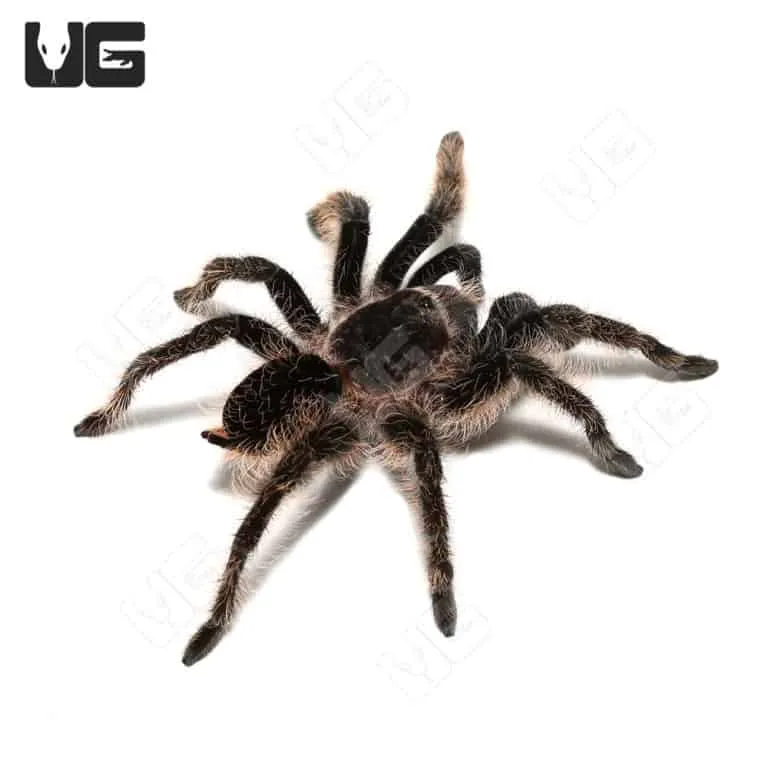
Molting is a natural process where tarantulas shed their exoskeletons to grow. During this process, the tarantula will often stop eating and may lie on its back. It is crucial not to disturb the tarantula during this vulnerable period. The process can take several hours to days, depending on the size of the tarantula. After molting, the tarantula’s new exoskeleton will be soft, and it will need time to harden. Do not feed your tarantula for a few days after molting to allow its fangs to harden. Provide extra humidity during molting to make the process easier. The frequency of molting decreases as the tarantula matures. The old exoskeleton provides valuable information about the tarantula’s health and growth. Molting is a sign of a healthy and growing tarantula. The process can be stressful so ensure a stress-free environment.
Lifespan and Behavior
Curly Hair Tarantulas have a relatively long lifespan. Females can live for 10-20 years or more, while males typically live for 5-10 years. Their behavior varies, but they are generally docile and reclusive. They spend most of their time hiding in burrows or under cover. They are nocturnal, meaning they are most active at night. Observe your tarantula’s behavior to learn its habits and preferences. They may flick their urticating hairs as a defense mechanism if they feel threatened. Provide a stimulating environment with appropriate substrate, hides, and feeding opportunities to encourage natural behaviors. Understanding their behavior helps you create a comfortable and enriching environment. Observing your tarantula can be a rewarding experience, allowing you to appreciate its unique characteristics and adapt your care accordingly.
Interesting Facts
Curly Hair Tarantulas possess several fascinating characteristics. For instance, their name comes from the curly hairs on their body. They are relatively slow-growing spiders. Their diet consists of insects, and they have a unique way of consuming their prey. They are docile creatures, making them ideal for beginner tarantula keepers. Their bites are not considered medically significant to humans. They have a strong sense of smell and use vibrations to detect prey. They are also known to flick their urticating hairs for defense. These spiders add beauty and a unique perspective to the world of pet-keeping. Enjoying the intricacies of these creatures brings unique enjoyment to tarantula keeping. These facts highlight the fascinating aspects of Curly Hair Tarantulas, enriching the experience of keeping them as pets.
